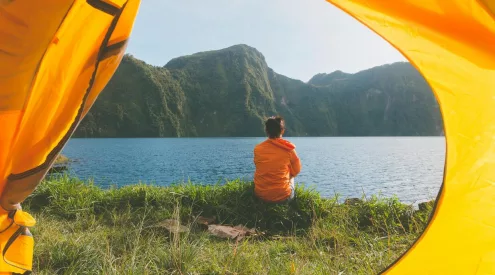While a gushing stream on the mountain may look extremely refreshing, the quality often means much to be desired. Even clear streams and lakes can be loaded with pathogens. So, unless you don’t care much for the environment and want to rely on expensive bottled water, you should always set off with a water filter and a method of purification.
The pathogens are divided into three micro organisms:
Protozoa [1-15 micron]
These are single-celled, animal organisms and get into water via animal and human feces. They’re highly resistant to chemical disinfectants, but thankfully they’re large enough to be easily filtered. Examples include amoebae, giardia, lamblia and cryptosporidia.
Bacteria [0.2 – 5 micron]
Bacteria are single-celled organisms these spread rapidly in water and, when mixed together with human and animal feces, become dangerous. Good filters will filter out bacteria with no difficulty. Examples are e-coli, salmonella and cholera.
Viruses [~0.02 – 0.2 micron]
They don’t possess their own metabolism so can only spread in living cells. Due to their size, filtering them out is difficult. But, they are sensitive to heat and chemical disinfectants. Usually bound to particles, they can be removed to a large extent using filter pores up to 0.2 microns. Hepatitis A, Norwalk and Polio are examples of viruses.
How to choose what treatment is best
Microfilters are best for
trips to remote areas
preparing suspect tap water in hotels or public wells
for purifying when treated after pumping
Purifiers are ideal for
trips to heavily populated area and developing countries where hygiene conditions are far from ideal
Disadvantages of microfilters and purifiers include
size and weight
higher initial outlay
maintenance
The advantages of tablets include
low initial outlay
lightweight and small
easy to use with exact dosage
most are effective against viruses and protozoa
Disadvantages of tablets include…
wait [sometimes referred to as “contact”] time of between 30 minutes and two hours
only to be used with clear water [cloudy water must be filtered first]
dirt and sediment cannot be removed from the water
a slight chlorine taste can remain in the water
What’s best? Ceramic or fibreglass filters?
Ceramic microfilters have a micro-porous layer impregnated with silver, which prevents bacteria growth during prolonged periods when not in use. The pore size of the ceramic is 0.2 microns [bacteria are between 0.2 and 5 microns].
Advantages of ceramic microfilters:
very high filter capacity and service life
also suitable for cloudy water, since it’s washable
filter capacity is measurable
silver in the ceramic prevents bacteria growth in the filter element
Disadvantages of ceramic microfilters:
higher initial outlay
heavier
greater pumping effort
Fiberglass microfilters form a depth filter within two supporting layers with a pore size of 0.3 microns. Here the bacteria and protozoa are trapped mechanically.
Advantages of fiberglass microfilters:
low pumping effort with high filter
performance
lower initial outlay
lightweight
Disadvantages of fiberglass microfilters:
cannot be cleaned
low filter capacity
General Water & Travel Tips:
1. Order your drinks without ice, if you are unsure that the ice is germ-free.
2. Drink only industrially bottled beverages. “Open” or unsealed bottles could be filled from a contaminated source.
3. Order your food well-cooked. Avoid raw or slightly cooked food, seafood, mayonnaise, ice cream, butter, etc.
4. Avoid eating food from street vendors.
5. Only eat fruits, raw vegetables, or salads if they were washed with germ-free water. Otherwise, you can wash them yourself with disinfected water.
6. Avoid raw milk. Pasteurized milk is safe to drink.
7. Fruit juices with high sugar content are an ideal medium for bacteria to grow. Only drink fruit juices if the fruit, blender, and anyone’s hands in contact were hygienically cleaned.
8. Fresh hot coffee and tea are safe beverages. Beer and wine are also typically safe. Note: Alcoholic beverages do not disinfect bacteria already in the stomach.
9. Brush your teeth with germ-free water. Even a small sip of contaminated water can cause diarrhoea.
10. Always use germ-free water when taking medicines. Diarrhea is not only uncomfortable; it could also affect the impact of the medicine (i. e. tablets).
11. Don’t bathe in tropical surface water.
12. Wash your hands regularly, especially after using the toilet and before contact with food.
13. Always use clean towels.























